There are certain things that can cause your vehicle's braking system to go wrong, and one of them could be as simple as a bleed screw leaking. We have researched what causes a bleed screw to leak and what you can do to fix it.
Bleeder screws leak when they're either loose or overtightened. Overtightening bleeder screws could potentially strip the threads, causing a gap between threads that will allow brake fluid to leak.
In addition, bleeder screws are always subjected to heat due to the friction in the caliper and will eventually wear out over time. It's just normal for bleeder screws to lose the threads after years of use.
If you're wondering if the bleeder screw in your car's braking system needs to be replaced, you're in the right place. You'll also learn about the importance of bleeding air out of your brake line so read on!
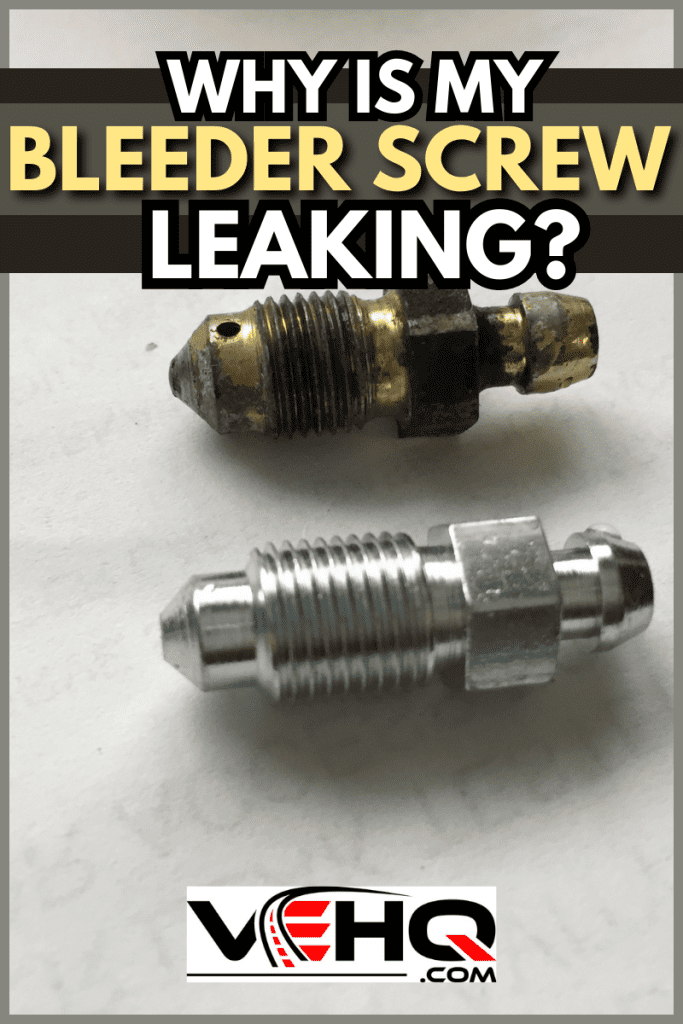
How is a Bleeder Screw Different From Other Screws?
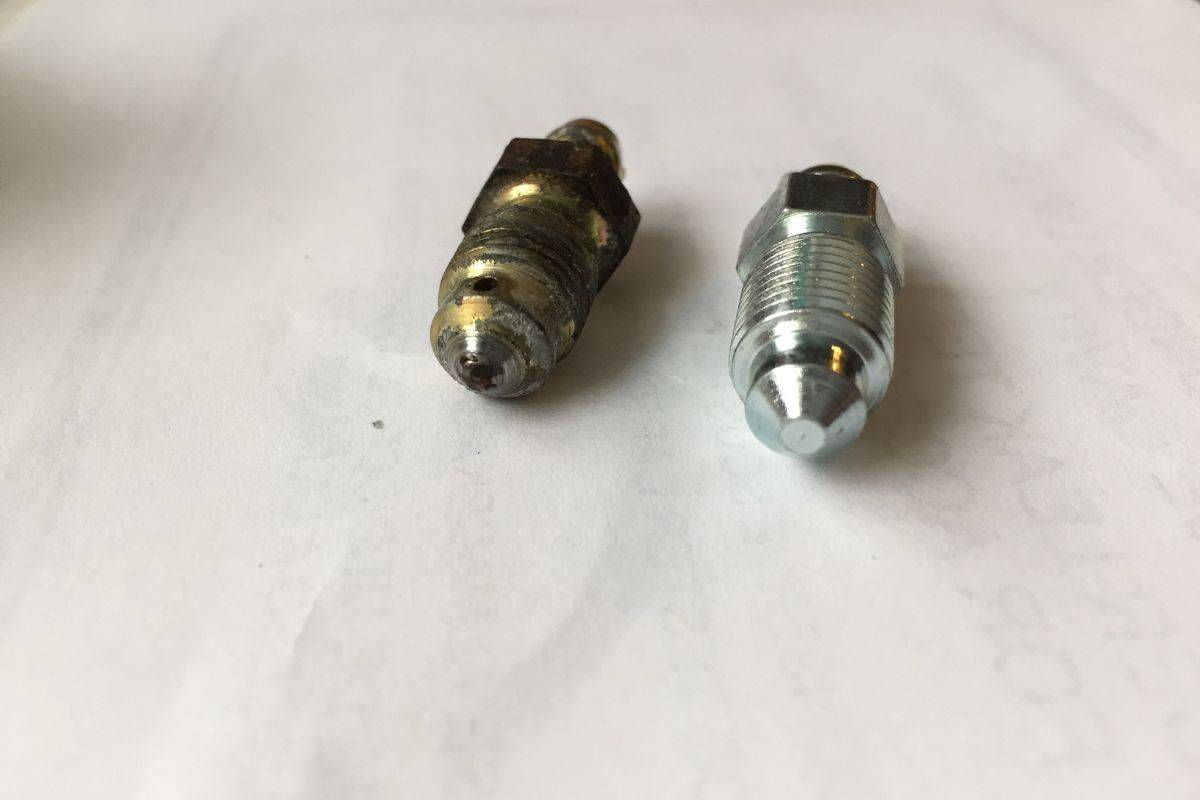
Bleeder screws are an integral part of a vehicle's braking system. They are designed to bleed air out of the brake line for smoother, more efficient braking. The key difference between a bleeder screw and other screws is its function.
Bleeder screws allow for the release of air or fluid, while other screws are used for fastening or adjusting components.
They are usually identified by their special shape, it's usually smaller than other screws and has a square or hexagonal shape in the head. Bleeder screws pretty much look like a gun bullet with a thread.
How does a bleeder screw improve your car's braking system?
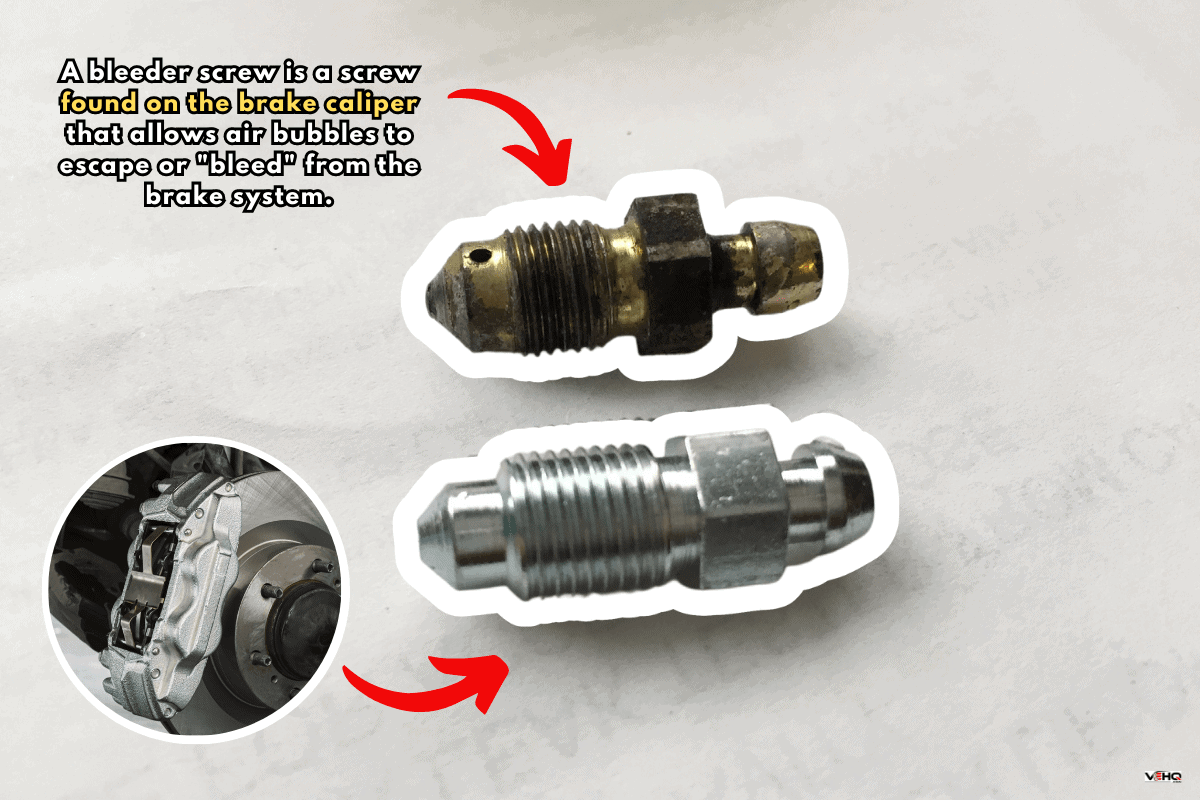
A bleeder screw is a screw found on the brake caliper that allows air bubbles to escape or "bleed" from the brake system.
When air gets into the brake system, it can cause the brakes to feel spongy or less responsive. By releasing the air through the bleeder screw, the brake system is able to function more efficiently, resulting in improved braking performance.
Am I Better Off Replacing a Leaky Bleeder Screw or Fix It Instead?
Replacing a leaky bleeder screw in a car's braking system is generally considered to be a more effective solution than simply having it fixed. This is because, over time, the bleeder screw can become worn or damaged, causing leaks and reducing the overall effectiveness of the braking system.
Replacing the bleeder screw ensures that the system is functioning at its best, providing optimum braking performance and safety. Additionally, replacing the bleeder screw is relatively inexpensive and can be done quickly, making it a cost-effective solution.
In addition, applying thread sealant around the thread of a bleeder screw is not a good course of action because you could overlook other potentially high-risk issues by concealing it with a sealant.
How To Replace a Car Brake Bleeder Screw
- First, locate the brake bleeder screw on your vehicle. This is typically located on the brake caliper.
- Clean the area around the bleeder screw to ensure a proper seal.
- Next, use a wrench or socket to loosen and remove the old bleeder screw.
- Take the new bleeder screw and apply a small amount of thread sealant to the threads. As a general rule of thumb, never apply thread sealant to an old bleeder screw and reuse it.
- Carefully thread the new bleeder screw into place and tighten it with the wrench or socket.
- Finally, test the brakes to ensure they are working properly and that there are no leaks from the bleeder screw.
It's important to note that you should always do this job with someone else, one person pumping the brakes and the other person keeping an eye on the brake fluid level. Also, always use the recommended brake fluid for your vehicle.


Check out this high-temperature thread sealant on Amazon.
Can I Bleed My Car's Brakes Without Going Through the Bleeder Screw?
Bleeding brakes typically involve using a bleeder screw to release trapped air bubbles from the brake system. However, there are alternative methods for bleeding brakes that do not involve using a bleeder screw.
According to Nathan Hunter, an automotive technician, you can follow the steps on how to bleed brakes without using a bleeder screw below:
- Ask someone to pump the brakes while you hold down on them.
- While this process is ongoing, loosen the valves one at a time.
- Tighten the valves and release the brake pedal.
- Repeat the process until you feel the brakes are getting firmer.
Which Brake Should I Bleed First: Front or Back?
The passenger rear brake should be bled first because it is the furthest away from the master cylinder, which means that any air bubbles will be pushed out of this line first.
This will help to ensure that all of the other brakes are bled correctly and efficiently, as any air bubbles in these lines can cause a decrease in braking power.
Bleeding the passenger rear brake first also helps to reduce any potential damage to other components of the braking system due to air bubbles being present.
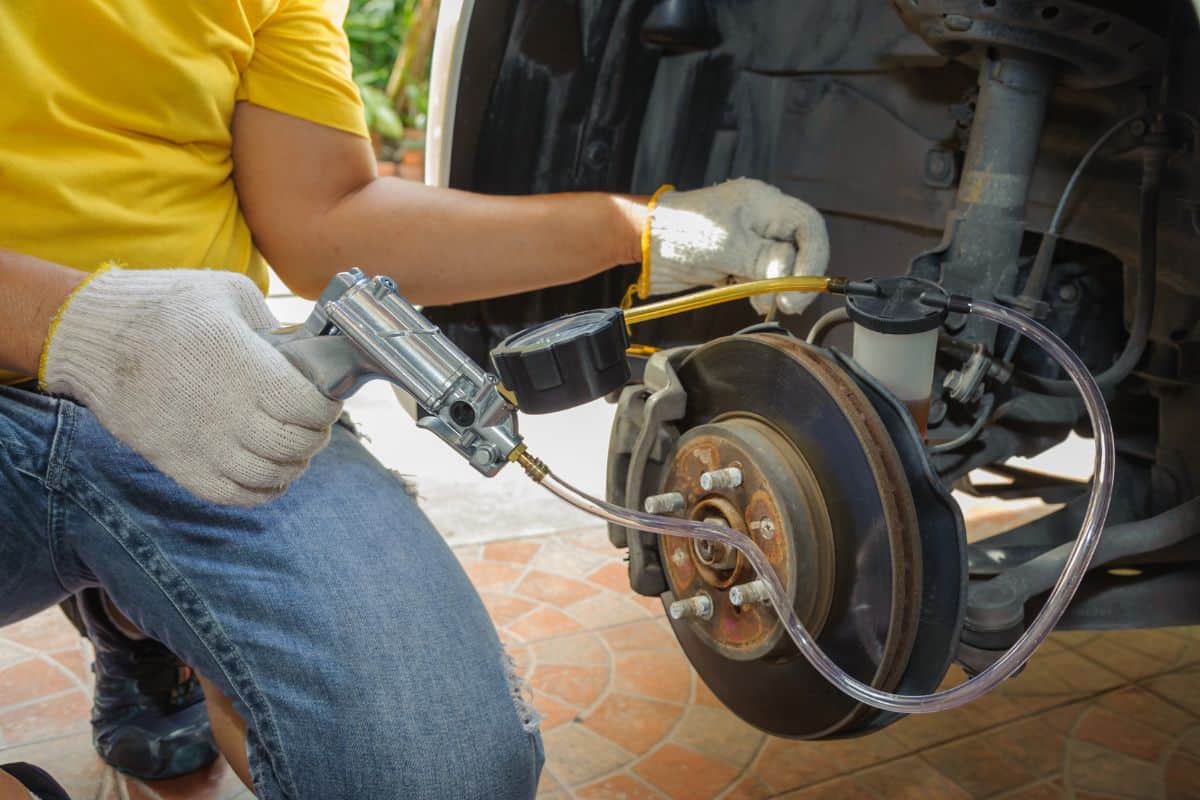
Do Air Bubbles in Brake Lines Go Away On Their Own?
Have you ever wondered whether brake line air bubbles go away on their own? Most people assume that brake line air bubbles do indeed go away, but the truth is not so simple.
Brake line air bubbles are most commonly formed because of a vacuum effect. As a vehicle goes down the road, the brakes apply pressure to stop it. As the vehicle comes to a halt, the brake pads or brake shoes scrape against the wheel rims, causing friction.
The friction creates heat, which in turn boils the brake fluid and creates pressure. In the process, the water in the brake fluid expands when it boils, causing air bubbles to form in the brake lines. Brake fluid gets its water content from moisture in the atmosphere.
Are Bleeder Screws' Size Universal?
A car's bleeder screw is not universal. The type and size of the bleeder screw will depend on the make and model of the car. In fact, there are 18 standard SAE bleeder screw sizes to choose from.
It is important to check the specifications of the bleeder screw for your specific car before purchasing to ensure a proper fit. It is always recommended to check with the manufacturer or consult the car's manual before buying a replacement part.


Check out this bleeding screw kit on Amazon.
My Bleeder Screw Seems Stripped. Can I Just Apply Teflon Tape Around Its Thread?
Teflon tape is not recommended to be used on areas where there's brake fluid because brake fluid is a solvent that can dissolve many plastics, including Teflon.
When brake fluid comes into contact with Teflon tape, it can cause the tape to degrade and break down, which can lead to leaks.
Additionally, Teflon tape doesn't provide a good seal in areas that are exposed to brake fluid because the fluid can cause the tape to slip and move, which can also lead to leaks.
How Snug Should Bleeder Screws Be?
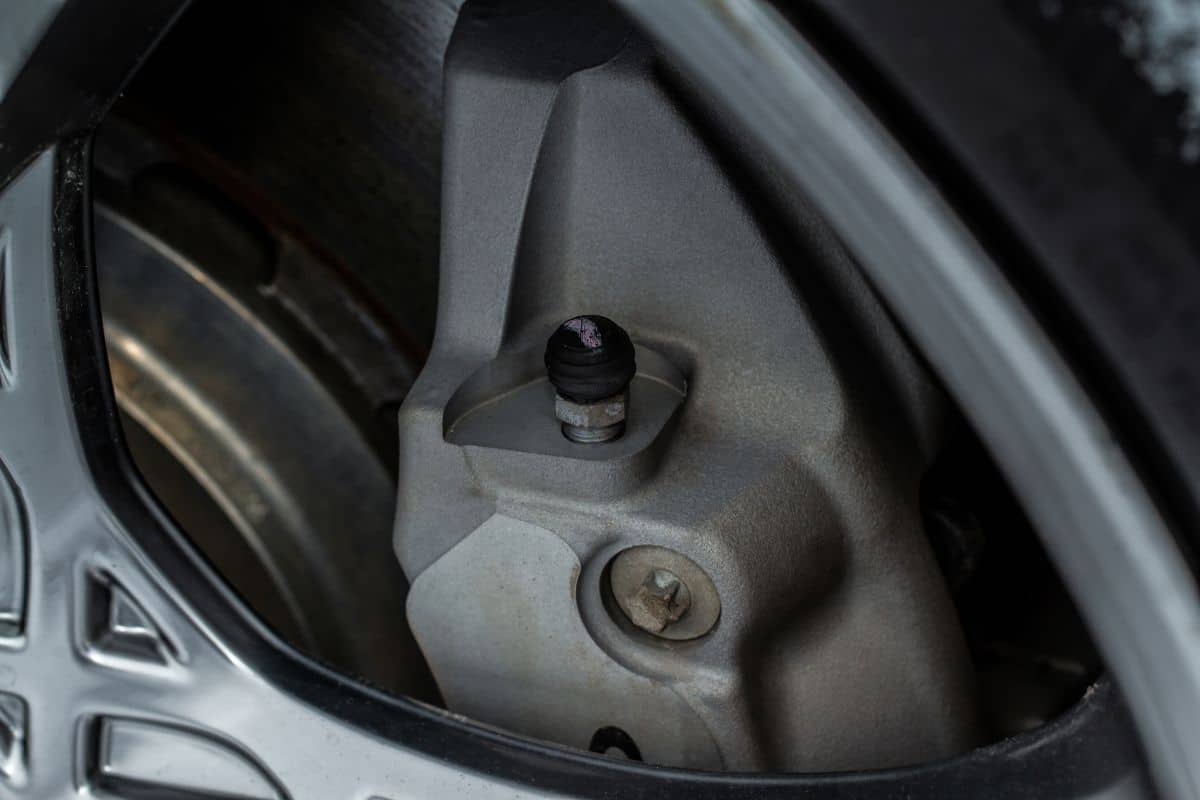
Brake bleeder valves should be tightened firmly, but not overly tight. They should be tightened until they are snug, but be careful not to overtighten and strip the threads or damage the valve.
A small amount of fluid leakage around the bleeder valve when it is closed is normal, but a steady stream of fluid indicates it is too loose. The standard torque specification for brake bleeder screws is 8 lbs-ft. You can also check your car's owner's manual for this information.
Can I Reuse a Stuck Bleeder Screw That Was Removed By Heating?
It is not recommended to reuse a bleeder screw that was removed by heating, as the heat may have damaged the threading and it may not seal properly or hold securely.
There is also the possibility of heat traveling through the caliper body and affecting the seal. It is best to replace the bleeder screw with a new one to ensure proper function.
Can I Just Replace My Brake Fluid And Not Bleed My Brakes?
If you don't bleed your brakes, air bubbles can become trapped in the brake system. This can cause a spongy or soft brake pedal, decreased braking power, and increased stopping distance. It's recommended that you bleed your brakes every time you change the brake fluid or if you notice a decrease in braking performance.
Can I Bleed the Brakes While the Engine is Running?
Bleeding brakes when the engine is running can cause the brake pedal to feel spongy, which is caused by the brake booster using engine vacuum to assist the braking.
When the engine is off, there is no vacuum assist, so any air in the brake lines will be more easily identified and expelled.
Additionally, bleeding brakes with the engine running can also potentially cause damage to the brake booster, as it is not designed to operate in this manner. It is generally recommended to bleed brakes with the engine off to ensure proper and safe function.
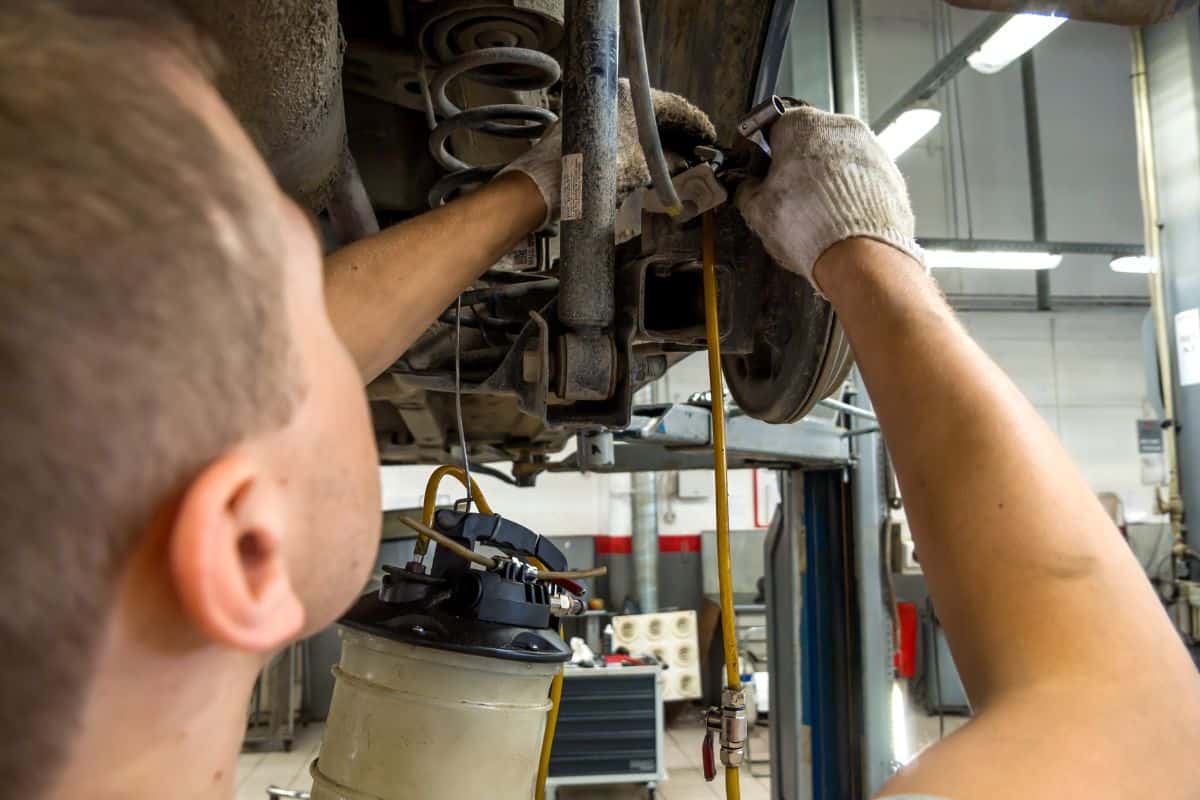
Does Bleeding a Car's Brake System Take Long?
The time it takes to bleed a car's brake system can vary depending on the make and model of the vehicle, as well as the method used to bleed the brakes. On average, it should take around 30 minutes to an hour to complete the process.
However, if you're inexperienced or don't have the right tools, it could take longer. It's important to follow the specific instructions for your vehicle and to always bleed the brakes in the correct order.
Typically, start with the passenger rear break, but if you have any doubts or concerns it's best to consult a professional mechanic.
In Closing
There are many things that can cause brake fluid to lose pressure and leak. However, you can avoid the majority of them by paying close attention to the one that is most overlooked: the bleeder screw. Bleeder screws are small components that act as a pressure reliever for the brake fluid and help maintain the right pressure in the brake lines. If there's any sign of leakage, it's essential to replace the bleeder screw. Don't even think of fixing it.
You might also like:
